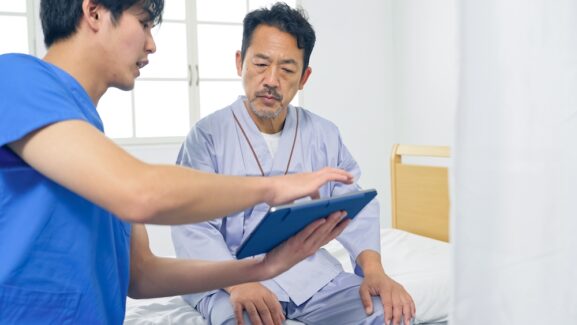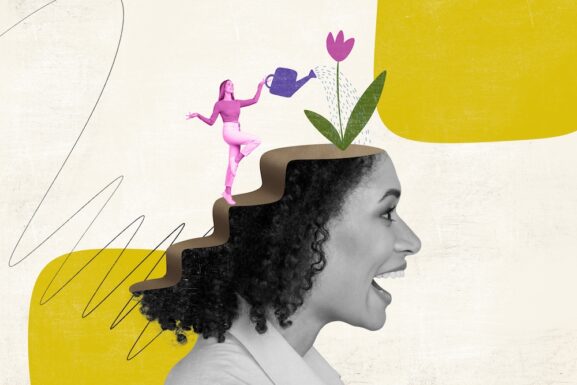Kambo Medicine: Benefits, Risks and Controversy
Kambo is the secretion of a tropical frog, Phyllomedusa bicolor, which is the giant leaf frog or giant monkey frog, and is native to the Amazon rainforest. Kambo is a poisonous substance and the indigenous peoples of the Amazon have used it in a ceremonial context for centuries.
Kambo cleansing, kambo circle, or kambo ceremony are the description of the rituals involving the substance. The substance also goes by the name sapo (from the Portuguese and Spanish “sapo”, meaning “toad”).
An increasing number of Westerners are joining kambo ceremonies, based on supposed medicinal benefits. But as we will see, the evidence for these benefits is lacking, and there are various risks to be aware of.
What Is Kambo?
The giant leaf frog secretes the poisonous kambo as a defense mechanism to kill or subdue animals that try to eat it. This secretion also goes by the name vacina do sapo (“frog vaccine”). It contains the opioids deltorphin, deltorphin I, deltorphin II, and dermophin.
Phyllomedusa bicolor are native to the Amazon basin of Brazil, Colombia, Bolivia, and Peru. Additionally, they are located in the Guianan Region of Venezuela and the Guianas, and in the Cerrado of the state of Maranhão in Brazil.
The Indigenous Use Of Kambo
For centuries, indigenous Amazonians have extracted the poison from the giant monkey frog for its alleged healing powers, utilizing it in a sacred ritual known as a kambo ceremony.
Native who practice kambo medicine are Panoan-speaking indigenous groups in the southeast Amazon rainforest. These include the Mayoruna, Matses, Marubo, Amahuaca, Kashinawa, Katukina, Yawanawá, and the Kaxinawá.
To collect the secretions of the frog’s body, the frog first has to be caught. A practitioner will tie the frog to four sticks, which are placed in the ground, so that the limbs are completely stretched. This pulling causes the frog to become stressed enough to activate its defense mechanism and secrete a toxic substance from its skin.
After collecting the secretions, the frog is let back into the wild. The secretions are left to dry.
During the kambo ceremony, small burns are created on the skin and a small dose of the frog’s secretions is applied to the open wounds. In indigenous rituals, the secretions are removed from the wounds after 15-20 minutes, ending the acute symptoms.
Traditional practitioners claim that kambo aids fertility, cleanses the body and soul, increases strength and stamina, and brings good luck to hunts. Indigenous peoples also use it to expel “panema” (bad spirit) and even to induce abortions.
Joaquim Luz, a Yawanawá leader, has criticized the commercial sale of kambo and its use without the preparation or permission of indigenous peoples. He has said that kambo users are at risk of death. Other native groups have also expressed their concerns.
Non-Indigenous Use Of Kambo
In and outside South America, a kambo ceremony can involve just two people (the practitioner and participant), or many participants at once. The latter is known as a kambo circle.
Participants are encouraged to bring plenty of water, a towel, and a bucket. There are typically yoga mats on the floor in the ceremony room, which may sometimes be the practitioner’s living room.
The first part of the kambo ceremony involves drinking about a liter of water or cassava soup. Next, the participant’s skin is deliberately burnt multiple times, usually on the upper arm or leg, by the practitioner with a smoldering stick or vine. The practitioner uses saliva or water to reconstitute the toxic secretions and place them on top of the burnt skin.
From the wound, the kambo enters the lymphatic system and bloodstream, where it’s claimed to race around the body scanning for problems. This usually results in some immediate side effects, especially vomiting.
Participants may be encouraged to shout “Viva” whenever one of them vomits into their bucket.
Once the effects of kambo begin to fade, the person will be given water or tea to help flush out the toxins and rehydrate.
Kambo Effects
The short-term effects of kambo include:
- Intense nausea
- Vomiting
- Diarrhea
- Loss of bladder control
- Edema (swelling) of the lips, eyelids, or face
- Headaches
- Tachycardia (a heart rate that exceeds the normal resting heart rate)
- Abdominal pain
- Dizziness
- A feeling of a lump in the throat
- Trouble swallowing
Symptoms can range in severity. They typically last 5-30 minutes, though they can last for up to several hours in rare cases.
The secretions seem to be vasoactive (affecting the circulation), explaining why they are absorbed rapidly.
There’s A Lack Of Evidence To Support Medical Claims
Non-indigenous users and practitioners of kambo claim that this alternative medicine helps to treat a wide variety of issues and conditions. These claims include treating:
- Addiction
- Depression
- Chronic pain
- Anxiety
- Cancer
- Alzheimer’s disease
- Diabetes
- Hepatitis
- HIV and AIDS
- Infections
- Infertility
- Rheumatism
- Vascular conditions
Promoters of kambo also claim that this alternative medicine can boost energy and physical strength, improve mental clarity, cleanse the soul and body, and remove negative energies. It is often marketed and administered as a “detox” treatment and purge — a way to remove toxins from the body.
Bryan Kuhn, a toxicology management specialist and pharmacist, has said, “There’s no evidence to support any therapeutic benefits for any medical condition. Period. End of story.”
Indeed, despite being marketed as a scientific treatment, there is no scientific evidence that kambo is effective. Experts have studied kambo for years and documented a few of its effects. These include brain cell stimulation and the dilation of blood vessels. However, none of the existing research supports the health claims surrounding kambo.
The Risks Of Kambo
In 2021, the Therapeutic Goods Administration of Australia (TGA) banned the use of kambo in Australia, classifying it as a schedule 10 poison. It is listed in the category for “substances of such danger to health as to warrant prohibition of sale, supply and use.”
The Australian Medical Association supports the TGA ban on kambo, saying it considers it to be a “significant health risk”.
Along with the intense and unpleasant effects that often come from a kambo ceremony, the risks of the substance include:
- Severe and prolonged vomiting and diarrhea
- Dehydration
- Muscle spasms and cramps
- Seizures
- Jaundice
- Confusion
- Scarring
Kambo has also been linked to toxic hepatitis and organ damage (i.e. to the liver, kidney, and pancreas). In an isolated number of users, kambo can result in death, which is usually due to negligence or contraindication.
Certain underlying health conditions can increase your risk for serious side effects, including:
- Cardiovascular conditions
- A history of stroke or brain hemorrhage
- Aneurism
- Blood clots
- Mental health conditions, such as depression, anxiety, and psychosis
- Low blood pressure
- Epilepsy
- Addison’s disease
Kym Jenkins of the Royal Australian and New Zealand College of Psychiatrists, in an article for the Sydney Morning Herald, said:
“people with mental illness are a more vulnerable group anyway for a variety of reasons. If you’re feeling very anxious or very depressed … you’re automatically more vulnerable and you could be more susceptible to people advertising or marketing a quick fix. I do have concerns that people can be preyed upon when they are more vulnerable.”
Ethical Issues
Phyllomedusa bicolor is not considered an endangered species by the International Union for Conservation of Nature (IUCN). However, there are still ethical issues surrounding the use of kambo.
The philanthropist and psychedelic advocate Tim Ferriss wrote a blog post on the ethics of psychedelic use and included kambo in the discussion. He said, “Simply put, please don’t consider this.”
Ferriss continues by saying:
“I am well aware that kambo is not a psychedelic in any classical sense. Nonetheless, it is often incorrectly viewed that way, and it is frequently incorporated into the menu of people who do and administer psychedelics. There is a tremendous amount of overlap. Personally, I’ve never met a non-indigenous user or provider of kambo who isn’t also a user or provider of psychedelics (hence this post is “An Urgent Plea to Users of Psychedelics”)…
“I find it impossible to endorse kambo, given the most common methods used to gather the secretions from the giant leaf frog (Phyllomedusa bicolor), possible side effects (including associated fatalities), and more attractive alternatives. If you think the frogs are released unharmed, as I’ve seen written repeatedly, imagine doing the below to another animal, like a dog or a cat. Many practitioners will put the frogs over or near an open flame, as these methods are explicitly intended to induce stress and prompt release of the skin secretions.”
Crucially, Ferriss states that “most Westerners have access to other compounds and approaches that may well provide relief [for ailments anecdotally relieved by kambo] without involving animal abuse.”
Indeed, there are actual psychedelics that can effectively alleviate depression, addiction, and alcohol abuse, without relying on cruelty to animals. Moreover, rapid increases in demand for these treatments wouldn’t threaten any animal populations, which could happen in the case of more people seeking out kambo ceremonies.
Kambo cleanses continue to gain popularity in North America and Europe. This is despite a lack of scientific evidence to back up the health claims surrounding the practice. Anyone thinking of joining a kambo ritual should be aware of this, as well as the side effects, risks, and ethical issues involved.



